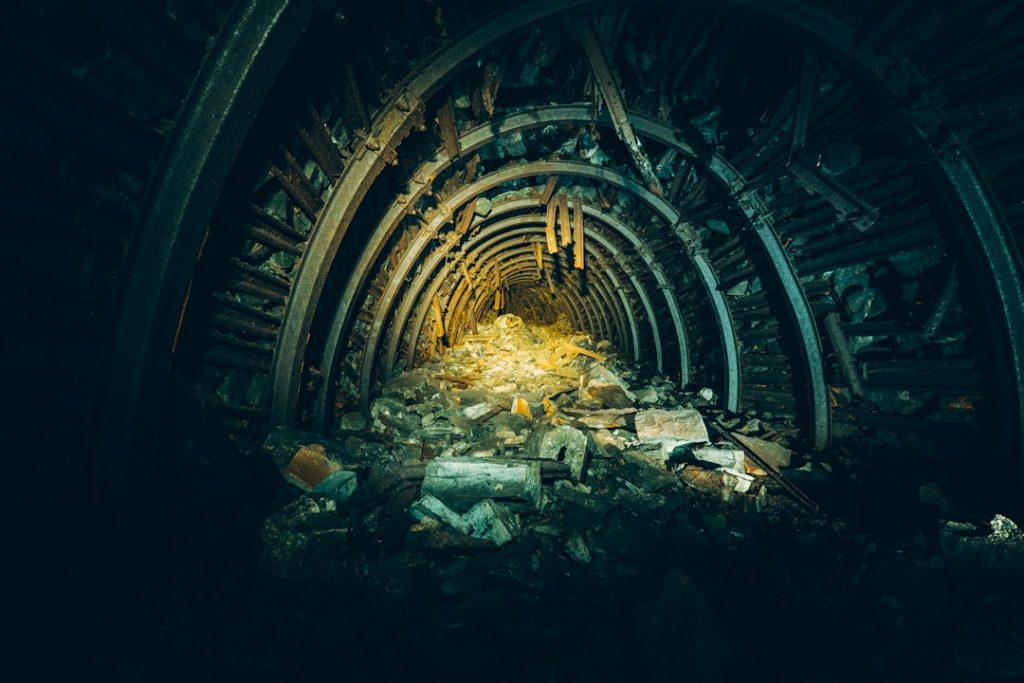Briquette manufacturing is the process of creating compact blocks of combustible biomass material, such as charcoal, wood, sawdust, or agricultural residues, through the use of a briquetting machine. These briquettes can be used as a fuel source for heating or cooking, as well as for industrial applications. The process of briquette manufacturing involves the compression of the biomass material into a dense and uniform shape, which makes it easier to handle, transport, and store. Briquettes are an eco-friendly and sustainable alternative to traditional fuel sources, as they are made from renewable resources and produce less smoke and ash when burned. The manufacturing of briquettes has gained popularity in recent years due to the increasing demand for clean and efficient energy sources, as well as the growing awareness of environmental issues.
Briquette manufacturing is a versatile process that can utilize a wide range of biomass materials, including agricultural residues such as rice husks, straw, and bagasse, as well as forestry residues like sawdust and wood chips. The process typically involves drying the raw material to reduce its moisture content, then crushing and compacting it into a dense and uniform shape using a briquetting machine. The resulting briquettes can vary in size and shape depending on the specific requirements of the end user. Briquette manufacturing offers numerous benefits, including the reduction of waste and the utilization of renewable resources, as well as the production of a clean and efficient fuel source. As the demand for sustainable energy sources continues to grow, briquette manufacturing is poised to play an increasingly important role in meeting these needs.
Key Takeaways
- Briquette manufacturing is a process of compacting biomass or waste materials into solid fuel products.
- The history of briquette manufacturing dates back to the 19th century, and has evolved with advancements in technology and environmental awareness.
- The science and technology behind briquette manufacturing involves understanding the properties of raw materials, the compaction process, and the use of binders and additives.
- Quality control is crucial in briquette manufacturing to ensure consistent product performance and customer satisfaction.
- Briquette manufacturing offers a sustainable and environmentally friendly alternative to traditional fuel sources, reducing carbon emissions and waste.
The History and Evolution of Briquette Manufacturing
The history of briquette manufacturing can be traced back to ancient civilizations, where various forms of biomass were used as fuel for heating and cooking. In more recent times, the industrial revolution led to the development of more efficient methods for processing biomass materials, which eventually paved the way for the modern briquette manufacturing process. The first patent for a briquetting machine was filed in the United States in 1895, marking the beginning of a new era in fuel production. Over the years, advancements in technology and engineering have led to the development of more sophisticated briquetting machines that are capable of producing high-quality briquettes from a wide range of biomass materials.
The evolution of briquette manufacturing has been driven by the increasing demand for clean and sustainable energy sources, as well as the growing awareness of environmental issues. As a result, the industry has seen significant advancements in terms of efficiency, quality control, and environmental impact. Today, briquette manufacturing is a well-established industry that plays a crucial role in meeting the global demand for clean and efficient fuel sources. With ongoing research and development efforts, the future of briquette manufacturing looks promising, with the potential for even more innovative and sustainable solutions to be developed.
The Science and Technology Behind Briquette Manufacturing
Briquette manufacturing involves a combination of science and technology to transform raw biomass materials into compact and uniform fuel blocks. The process begins with the selection and preparation of the biomass material, which may involve drying, crushing, and sizing to ensure optimal quality and consistency. The next step is the actual briquetting process, which involves the use of a briquetting machine to compress the biomass material into a dense and uniform shape. This is achieved through the application of high pressure and temperature, which causes the lignin in the biomass to bind the particles together, creating a solid briquette.
The science behind briquette manufacturing lies in understanding the properties of different biomass materials and how they can be manipulated to produce high-quality briquettes. Factors such as moisture content, particle size, and binding agents all play a crucial role in determining the final quality of the briquette. In addition, advancements in technology have led to the development of more efficient and versatile briquetting machines that are capable of processing a wide range of biomass materials. These machines utilize hydraulic systems and high-pressure rollers to ensure consistent compression and density of the briquettes. Overall, the science and technology behind briquette manufacturing continue to evolve, leading to more efficient processes and higher quality products.
The Importance of Quality Control in Briquette Manufacturing
| Metrics | Data |
|---|---|
| Moisture Content | 5-12% |
| Density | 1000-1300 kg/m3 |
| Calorific Value | 4000-4800 kcal/kg |
| Particle Size | 6-12 mm |
| Compression Strength | ≥ 2000 N |
Quality control is a critical aspect of briquette manufacturing, as it ensures that the final product meets the required standards for performance and safety. Quality control begins with the selection and preparation of the raw biomass material, which must be carefully inspected for moisture content, particle size, and impurities. This is followed by rigorous testing during the briquetting process to ensure that the resulting briquettes are dense, uniform, and free from defects. Quality control measures also extend to packaging and storage, as proper handling and transportation are essential to maintaining the integrity of the briquettes.
The importance of quality control in briquette manufacturing cannot be overstated, as it directly impacts the performance and reliability of the end product. High-quality briquettes burn more efficiently and produce less smoke and ash, making them a preferred fuel source for both domestic and industrial applications. In addition, strict quality control measures help to ensure that the briquette manufacturing process is environmentally friendly and sustainable. By adhering to stringent quality standards, manufacturers can build trust with consumers and establish a reputation for producing reliable and high-performance briquette products.
Environmental Impact and Sustainability of Briquette Manufacturing
Briquette manufacturing offers significant environmental benefits compared to traditional fuel sources, making it a sustainable and eco-friendly alternative. By utilizing renewable biomass materials such as wood waste, agricultural residues, and sawdust, briquette manufacturing helps to reduce waste and minimize the reliance on non-renewable resources. In addition, burning briquettes produces fewer emissions compared to traditional fuels, leading to lower levels of air pollution and reduced impact on climate change.
The sustainability of briquette manufacturing also extends to its impact on local communities and economies. By creating a market for biomass materials that would otherwise go to waste, briquette manufacturing provides an additional source of income for farmers and forestry workers. This not only helps to support rural economies but also promotes sustainable land management practices by incentivizing the responsible harvesting of biomass resources.
The Art of Marketing and Selling Briquette Products

The marketing and selling of briquette products require a strategic approach that emphasizes their unique benefits and advantages over traditional fuel sources. This includes highlighting their eco-friendly nature, high efficiency, low emissions, and versatility for various applications. Effective marketing also involves educating consumers about the environmental impact of their fuel choices and how using briquettes can contribute to sustainability efforts.
In addition to traditional marketing channels such as advertising and promotions, successful sales strategies for briquette products often involve partnerships with retailers, distributors, and industry stakeholders. Building strong relationships with these partners can help expand market reach and increase product visibility. Furthermore, offering incentives such as bulk discounts or product demonstrations can help attract new customers and encourage repeat purchases.
The Future of Briquette Manufacturing: Innovations and Trends
The future of briquette manufacturing is filled with exciting possibilities as advancements in technology continue to drive innovation in the industry. One key trend is the development of more efficient and versatile briquetting machines that can process a wider range of biomass materials while maintaining high quality standards. This includes machines with improved automation features, higher throughput capacities, and enhanced energy efficiency.
Another emerging trend is the use of advanced binding agents that can further improve the performance and durability of briquettes. These agents may include natural additives or bio-based polymers that enhance the binding properties of biomass materials without compromising their eco-friendly credentials.
Furthermore, there is growing interest in developing customized briquette products tailored to specific applications or industries. This includes specialized formulations for industrial processes or tailored shapes for optimized combustion in different types of stoves or boilers.
Overall, the future of briquette manufacturing looks promising with ongoing research and development efforts focused on enhancing efficiency, quality, and sustainability across all aspects of the production process. As global demand for clean energy continues to rise, briquette manufacturing is poised to play an increasingly important role in meeting these needs while contributing to environmental conservation efforts.
If you are interested in learning more about personalized briquette solutions, you should check out this article on Almassiyah. It discusses how personalized briquette solutions can meet your specific needs and requirements.
FAQs
What is briquette manufacturing?
Briquette manufacturing is the process of converting various types of raw materials, such as wood, agricultural residues, and other biomass materials, into compact, solid fuel products known as briquettes. These briquettes are used as a renewable and sustainable alternative to traditional fossil fuels.
What are the common raw materials used in briquette manufacturing?
Common raw materials used in briquette manufacturing include wood chips, sawdust, agricultural residues (such as rice husks, straw, and bagasse), and other biomass materials. These materials are compacted and compressed to form briquettes.
What are the benefits of briquette manufacturing?
Briquette manufacturing offers several benefits, including the utilization of waste materials, reduction of greenhouse gas emissions, and the production of a renewable and sustainable fuel source. Briquettes also have a higher energy density compared to the raw materials used in their production.
What are the different briquette manufacturing processes?
There are several different briquette manufacturing processes, including mechanical briquetting, hydraulic briquetting, and extrusion briquetting. Each process involves different techniques and equipment to compact and form the raw materials into briquettes.
What is the environmental impact of briquette manufacturing?
Briquette manufacturing has a positive environmental impact as it helps reduce the amount of waste materials that would otherwise be disposed of in landfills or burned. Additionally, the use of briquettes as a fuel source can help reduce reliance on fossil fuels and lower greenhouse gas emissions.



